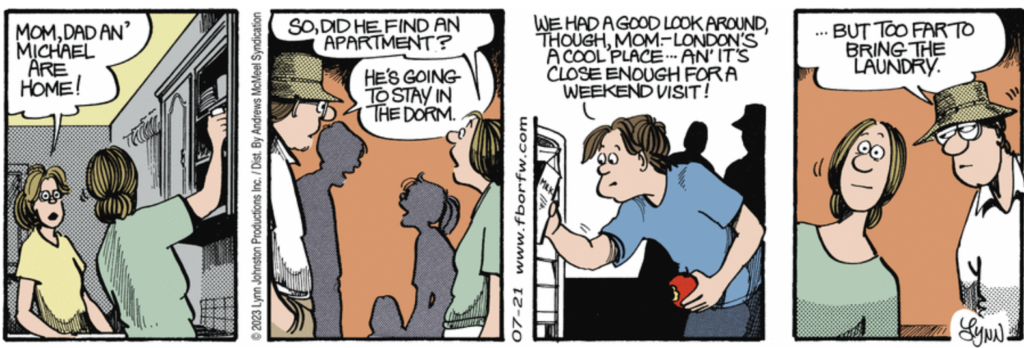A Good Negative Example of Why You Need the Oxford Comma
The Oxford comma is putting a comma before the last item (before the conjunction if the list has one) in a list of three or more. For example: one, two, and three. A lot of styles tell you not to put in that last comma. The excuse is that it saves space. (Humbug!) the problem is that without that comma you might be misunderstood sometimes. Here’s an example where you shouldn’t use that comma, because it’s not a list of three or more things even though at first glance that’s what it looks like. First panel:
The first item (Mom,) is direct address, so the other two words (Dad and Michael) don’t make a list of three, so no comma.


Leave a Reply